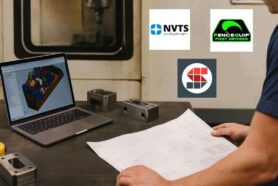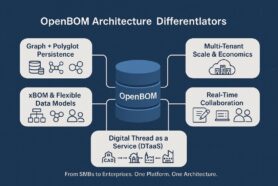
Many manufacturing and industrial companies are looking for a way to improve their product development process. PLM is usually the main category of software manufacturing companies are looking at. With a number of PLM solutions available on the market, not all of them are the same and offer the same value. In my article last week 3 Differentiators of Native-Cloud PLM systems, I clearly identified that multi-tenancy is the number one characteristic of the OpenBOM platform that brings a unique value. In the past, I wrote about the main differences between single-tenant and multi-tenant architecture- check here. Also, check our webinar – Demystifying Modern PLM.
OpenBOM is a unique multi-tenant platform that offers three unique values: data sharing, collaboration, and real-time updates. These features make it an ideal choice for companies that want to improve their product design process. In my article today, I want to explore these unique values more in detail.
Data Sharing
Data is the heart of OpenBOM multi-tenancy and the most important element is data granularity and data access. OpenBOM defines the data (eg. Item, Catalog, Bill of Materials, etc.) in a way that it can be shared, manually or automatically, which creates an easy way to access the data from multiple companies, teams, and users. As much as it sounds simple, it is a big deal – the simplicity and ease of data sharing, similar to what you can do with all modern cloud-native applications (eg. Onshape, Google Workspace, GitHub, etc.)

Check more in the OpenBOM training library – Data Sharing and Collaboration. There are three levels of data sharing
- Automatic (using Team Views in OpenBOM Teams and Company Subscriptions)
- Manual (using “Share” command allowing you to share a specific BOM or catalog)
- Via a single view (a custom way allowing to share a subset of BOM or catalog)
Data sharing is a big deal compared to the need to export data and send it via email with file attachments.
Collaboration
Collaboration is an overused word in PLM business. Everything is considered collaborative for the last 10-20 years. However, the definition is not the same. At OpenBOM, collaboration is the ability to add data elements, update the value and get it reflected in all browsers that are looking at this data at the same time in real-time. In the picture below you can see an example of the collaborative OpenBOM user interface with avatars of users sharing data and accessing it with ease.

Real-Time Updates
The last part of multi-tenancy is related to data management and data updates. There are two aspects of updates – data model and data itself. I’d like to start with the data model first. For many existing PLM and other data management tools, the data model update (sometimes called schema) is really hard and takes special admin functions, requires a system restart, and many others. At OpenBOM, it is as simple as adding a column to Excel. You can just navigate to the data controls and add columns (it is called Properties at OpenBOM lingua-franca).
The second element of real-time data updates is related to shared data. When you share data (eg. BOM) with your contractor, the data is available in real-time (and of course, protected). However, when one of the sides is making a change, it is reflected immediately with everyone who is sharing with whom the data is shared. The data sharing is coordinated with data access level and lifecycle management (immutable releases cannot be updated, etc.)
Conclusion
Cloud-Native Platforms are tightly connected. Unlike a common misconception, that multi-tenancy is a purely economical element for a software vendor to make the software run on the shared servers, in reality, multi-tenancy can bring a lot of unique functions and values. And this is what makes the difference. The most important element of multi-tenant is the ability to connect companies and create a network value.
REGISTER FOR FREE to check out how OpenBOM can help. Contact us if you need more information.
Best, Oleg
Join our newsletter to receive a weekly portion of news, articles, and tips about OpenBOM and our community.










